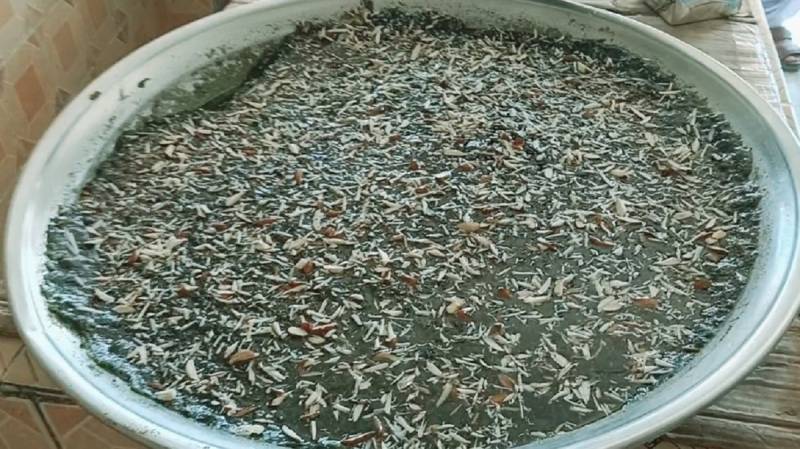
If you visit the southwestern, hammer-head coastal town of Gwadar, you will be astonished by the beauty of the city, its people, and its pristine coastline. As you settle into the city, sampling its range of freshly caught fish prepared into scrumptious meals, the city has a surprise for you to finish off your meal and perhaps your day on a sweet note.
A plate of warm Gwadari halwa—the 'Gift of Gwadar'—satisfies not only the cravings for something sweet but also offers spoonful-sized embraces of sweetness, warmth, and wholesomeness—all the characteristics of the people of Gwadar.
Named after the city of Gwadar — from the Balochi phrase 'Gowat-e-Dar' or "the door of air" — Gwadari halwa came to the fore at least six years before Pakistan gained independence in 1947. This delicious sweet treat is counted by locals among the city's highlights. It draws the attention of visitors and halwa aficionados from around the country.
Of course, Gwadar boasts other sweets as well such as Mehso, Mohtal, Mahwa, and others, but the Gwadari halwa is by far the most popular.
The halwa is available in three flavours. The first is 'Banoor' or sesame. It is the original type of halwa, which is red in colour and covered in finely sliced dry fruits. The second flavour of Gwadari halwa has a distinct, deep sea green colour, much like the sea off the Gwadar coast. The third type is known as 'Dahrmaan' (translating to medicine in the local dialect of Balochi) Gwadari halwa, made with copious amounts of Desi Ghee and dry fruits.
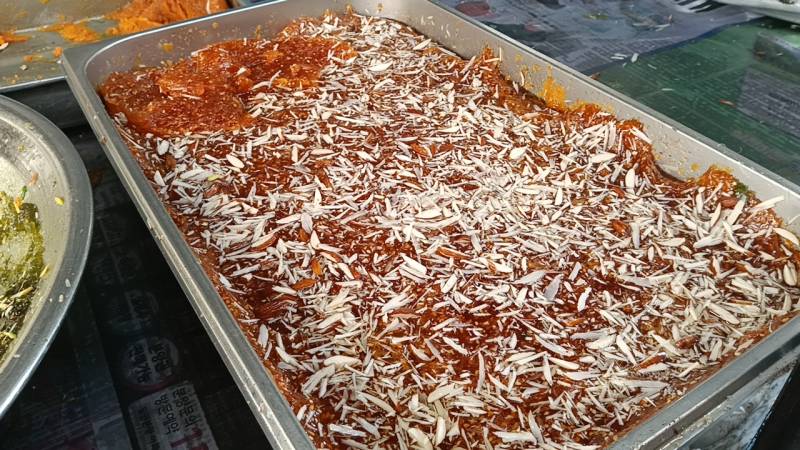
How do you make Gwadari halwa?
To learn more about this traditional sweet dish, I set off with fellow journalists Javed Baloch and Shayhaq Baloch to seek out its source.
Our hunt took us from the Gwadar Press Club to the Shahi Bazaar (Royal Market), located in the city's older parts.
Having travelled down the modern marine boulevard, turning into the older parts of the city shocked me at how dilapidated and ruinous the buildings were. Their architecture spoke of a time that had long passed.
We navigated through narrow streets to the shop and kitchen run by Ustad Abdul Sattar Baloch. Abdul Sattar explained that Gwadari requires a few ingredients such as cornflour, sugar, oil, water, cardamom (elaichi), lots of thinly sliced dry fruits for garnishing and some other items. The 'dahrmaan' Gawadari halwa is made with much of the same ingredients but has extra desi ghee, which lends to its flavour and richer colour. It is also why dahrmaan halwa costs more than other types of Gwadari halwas.
Abdul Sattar said it takes them around 30 minutes to cook around 15 kilogrammes of halwa and requires input from five to six workers.
He added that they prepare the halwa on wood-fired stoves due to the lack of natural gas facilities in Gwadar.
Skilled halwais (halwa makers) take special care of cleanliness and hygiene in their kitchens despite the limited resources and lack of facilities.
Tracing the recent history of Gwadari halwa
Khuda Baksh opened one of the first stores—known as 'bakaar' in the local language—to sell Gwadari halwa about 80 years ago.
The store is still in Gwadar and is run by the third generation of Khuda Baksh's family. Majid Baloch, who hails from Khuda Baksh's family and works at the store, said Khuda Bakhsh helped make the halwa popular in Gwadar. He added that their dahrmaan Gwadari halwa was iconic.
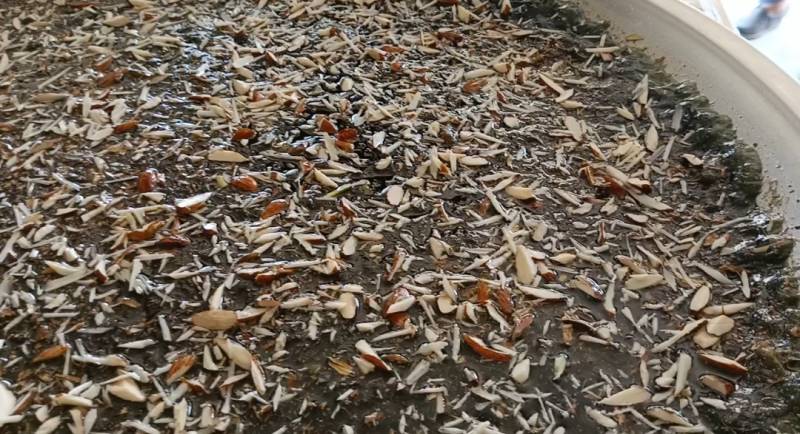
Asked about their secret to having lasted for so long and gaining fame, Majid said they only use premium ingredients and work hard to make their product the best, which the customers recognise.
Javed further claimed that even though the oldest store selling the halwa only dates back 80 years, the halwa has been made in the region for far longer.
While Khuda Baksh was the pioneer, he is definitely not the only one who sells halwa. Dost Mohammad Halwa's store provides tough competition.
Dost Mohammad started his store in 1956. Bilal Baloch, Dost Mohammad's grandson who now runs the sweets store, says the business has been in their family for three generations.
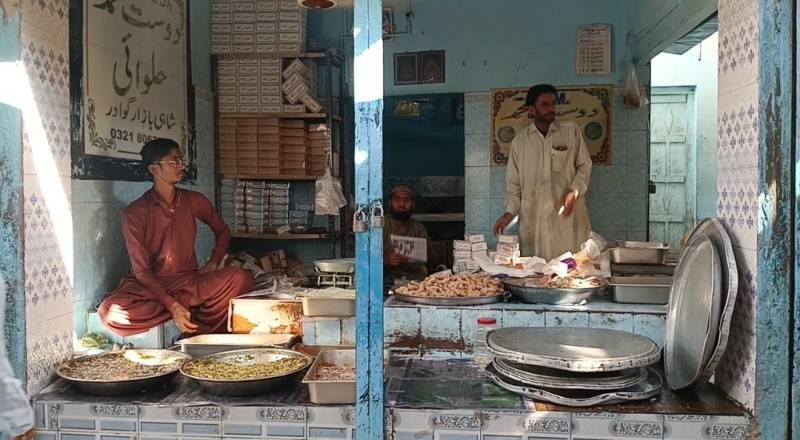
"After my grandfather, my father, and uncles ran the business, it has now been passed down to us," Bilal said, adding that they sell all kinds of Gwadari halwa.
Bilal said that the 'dahrmaan' halwa is the most popular, and people come from as far away as the Kech and Panjgur districts to buy it. He added that they sell around 70 or 80 large dishes full of the halwa daily. He added that people also order the dish to serve during special events such as nikkah ceremonies and weddings or to give out as charity.
He claimed that while Khuda Baksh Halwai is the pioneer, their store, Dost Mohammad Halwai, is now the most popular destination for the halwa.
Asked what makes their version of the halwa popular over Khuda Baksh's offerings, Bilal said that they use different dry fruits such as walnuts, pistachios, almonds, cardamom, and desi ghee in their version of dahrmaan halwa.
Since dahrmaan translates to medicine, Bilal explained that it was named such because of the rich ingredients it uses, it is considered a healthy dessert. Due to its unique taste, he said that the halwa is sometimes referred to as the king of halwas.
Fans far and wide
Gwadar-based journalist Javed Baloch says the Gwadari Halwa is quite popular across Balochistan due to its taste and flavour. He added that people from other provinces and countries visit Gwadar simply to sample the delicacy.
Javed said that residents of Gwadar serve the delicious halwa to their guests. It is made-to-order for special occasions such as weddings and religious festivals. It is a favourite gift for both those giving and those receiving it.
If you look hard enough, you can find its variants in regional countries such as Oman, Iran, the United Arab Emirates, Bahrain, and Qatar. These countries also have a strong presence of people with Baloch ethnicity, especially from Gwadar and the Makran belt.
Located just 156.8 kilometres north of Gwadar, Turbat in the Kech district is a city in love with halwa. The dessert is so popular there that the sea green-coloured Gwadari halwa is widely found in local stores.
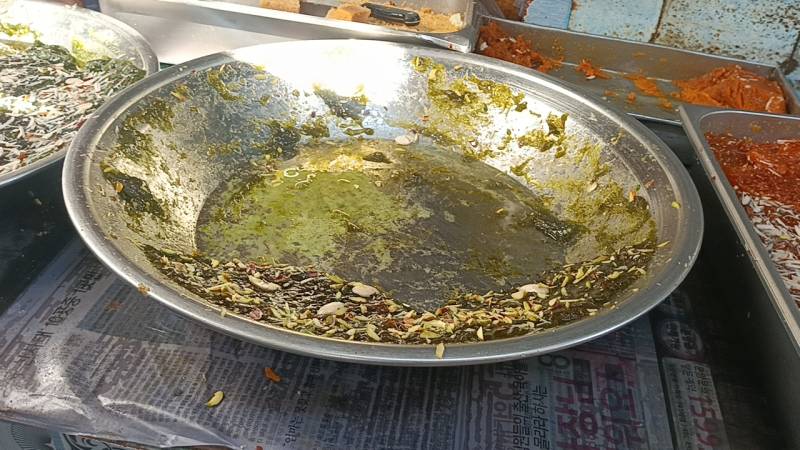
A female resident of Turbat, who did not wish to share her name, was enjoying some Gwadari halwa.
"How is it?" I asked her.
"The Gwadari halwa is very delicious and tasty," she responded, adding that it is quite enjoyable.
She added that she finds the dahrmaan variety of Gwadari halwa far more delicious than its other varieties. The woman lamented that they do not get fresh Gwadari Halwa in Turbat. The stores in Turbat Bazar, she said, mostly sell the green-coloured variety, which lacks the taste of the halwa made in Gwadar.
She said that when someone coming from Gwadar does not bring Gwadari halwa with them, we doubt if they have truly returned from Gwadar.

